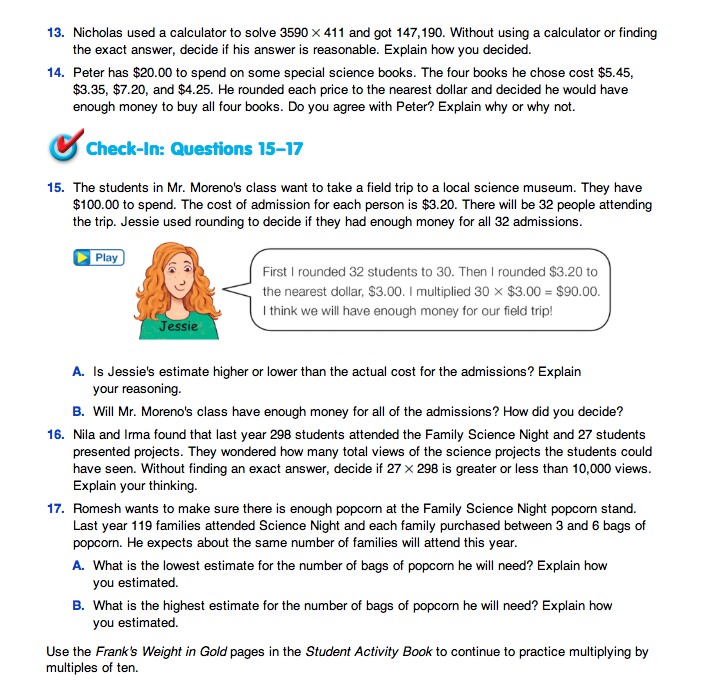Estimate Products
Est. Class Sessions: 3Developing the Lesson
Part 3: Choosing Efficient Estimation Strategies
Discuss the necessity of choosing convenient numbers that are close enough to give a good estimate but are also easy to use in mental computations.
Point out to students that the rounding of factors is sometimes a good strategy for estimating products. Students must decide whether rounding procedures should be used to make specific estimates.
Read the vignette in the Choosing Efficient Estimation Strategies section of the Student Guide. In this vignette, Tanya and Nick each identify a convenient number to decide if they have enough money to purchase two posters.
Use these or similar prompts to discuss the choices each student made:
Explain that while rounding to the nearest dollar or nearest $10.00 provided a reasonable estimate for Tanya and Nick, it may not always provide the most accurate estimate.
Pose the following problem:
Assign Questions 11–14. As students work, encourage them to share their estimation strategies. Circulate and listen for specific strategies such as: choosing convenient numbers that they can easily multiply in their heads, finding the closest benchmark number by rounding to multiples of ten, doubling, using “money numbers” like 25 or 50, or other “kid friendly” numbers. Pay attention to the students who used different strategies and have them share a whole class discussion. For example, to estimate the answer for Question 11, students can think about money since they know that 4 quarters is equal to $1.00 and three quarters is equal to $.75. They can estimate that the students in Mr. Moreno's class will produce 175 liters of spit in one week.
Questions 12–13 provide students with an opportunity to use estimation to check the reasonableness of an answer. In Question 12, students should see that Tanya used benchmarks that were multiples of ten, rounded 23 to 20 and 105 to 100, and then multiplied 20 × 100 to find that the students in the library would burp about 2000 times during the week. For Question 13, one possible strategy students can use to decide if Nicholas's answer is reasonable is to think 3500 × 400 = 1,400,000. Since 1,400,000 is much more than 147,190 they can see that his answer is not reasonable.
In Question 14, students should see that when Peter rounded each price to the nearest dollar his estimate was low because of the extra cents on each dollar.
Assign Check-In: Questions 15–17 to students to complete independently.













